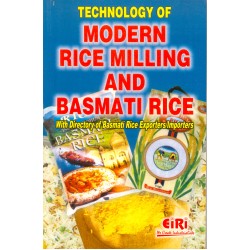Complete Technology of Biomass, Chemicals from Biomass, Biofuels & Biodiesels Manufacture Hand Book

- More than 40 years of experience
- Managed by expert industrial consultants
- ISO 9001-2015 Certified
- Registered under MSME, UAM No: DL01E0012000
- 24/5 Research Support
Get your quesries resolved from an industry expert. Ask your queries before report or book purchase. - Custom Research Service
Speak to the our consultant to design an exclusive study to serve your research needs. - Quality Assurance
All reports are prepared by highly qualified consultants & verified by a panel of experts. - Information Security
Your personal & confidential information is safe & secure.
- What is biomethanation?
- Feature of biomethanation
- Mechanism of biomethanation
- Current status
- General scope
- Ethanol fermentation of saccharine materials
- Ethanol fermentation of starch
- Ethanol fermentation of lignocellulosics
- (a) Concentrated Sulfuric Acid Process
- (b) Dilute Sulfuric Acid Process
- What is acetone-butanol fermentation?
- Characteristics of acetone-butanol fermentation
- Reactions of acetone-butanol fermentation
- Energy efficiency of acetone-butanol fermentation.
- Products of acetone-butanol fermentation
- What is hydrogen fermentation?
- Characteristics of hydrogen fermentation
- Reactions of hydrogen fermentation
- Energy efficiency of hydrogen fermentation
- Products of hydrogen fermentation
- What is lactic acid fermentation?
- Lactic acid bacteria
- Biomass resources for lactic acid fermentation
- Utilization of unused biomass from palm oil
- industry
- Lactic acid fermentation from kitchen garbage
- Purification of lactic acid
- What is silage?
- Silage making
- Silage fermentation
- Roll bale silage
- Technological actuality
- What is composting?
- Basic principles of composting
- Basic elements of composting
- (a) Preprocessing
- (b) Fermentation
- (c) Product forming process
- Current composting technology
- Chemicals From Biomass
- Sugar-derived Chemicals
- Syngas derived products
- Overall Outlook
- ,-Furan dicarboxylic acid (FDCA)
- -Hydroxypropionic acid (-HPA)
- Derivative Considerations
- Aspartic acid
- Derivative Considerations
- Glucaric acid
- C containing compounds
- Methane
- Carbon Monoxide
- Methanol
- Formic acid
- C containing compounds
- Ethylene
- Mono-Ethyleneglycol (MEG)
- Other C based building blocks
- C containing compounds
- Lactic Acid
- Ethyl Lactate
- Propylene Glycol (,-Propanediol)
- , Propanediol
- Epichlorohydrin
- Isopropanol
- n-Propanol
- Propylene
- C containing compounds
- Butanol
- Succinic Acid
- C containing compounds
- Furfural
- Levulinic acid
- Isoprene / Farnesene (Biohydrocarbons)
- Xylitol/Arabitol
- C containing compounds
- Sorbitol
- Lysine
- Adipic acid
- Glucaric acid
- Other C based building blocks
- Cn containing compounds
- Polyhydroxyalkanoates
- Fatty Acid derivatives
- Phosphoric Reaction Process
- Methanol (or Ethanol) Reclaiming and
- Dehydration Process
- Glycerol Refining Process
- Biorefinery concept/system
- Conversion processes for first generation biofuels
- Transesterification
- Homogeneous catalysis.
- Heterogeneous catalysis.
- Ethanol conversion processes.
- Fermentation process.
- Conversion processes for second generation
- biofuels
- Physical conversion
- Mechanical extraction.
- Briquetting of biomass.
- Distillation.
- Thermo-chemical conversion
- Direct combustion.
- Gasification.
- Liquefaction
- Pyrolysis.
- Conventional pyrolysis.
- Fast pyrolysis.
- Flash pyrolysis.
- Hydrotreating of vegetable oils/green diesel
- Bio-oil
- FT oil or green motor fuel from biomass
- Bioethanol from lignocellulosic biomass
- Chemical conversion
- Chemical hydrolysis
- Green biorefinery
- Forest and lignocellulosic based biorefinery
- Aquatic or algae-based biorefinery
- Integrated biorefinery
- Bioethanol
- Feedstock Production
- Sugar Crops
- Sugar beets
- Sugar cane
- Sweet sorghum
- Starch Crops
- Cereals
- Potatoes
- Cellulosic Feedstock
- Cellulosic wastes
- Bioethanol Production
- Sugar-to-Ethanol Process
- Starch-to-Ethanol Process
- Cellulose-to-Ethanol Process
- Distillation and Dehydration Process
- Properties of Bioethanol
- Spark Ignition Engines
- Compression Ignition Engines
- Fuel Cells
- in wastewater into biodiesel
- Collection of filamentous oil-producing algae
- Biodiesel engine testing
- Concluding remarks
- (Eicchornia Crassipes)
- Raw Materials for Biodiesel Production:
- Biodiesel Production Process
- Trans esterification reaction:
- Water hyacinth (eichhornia crassipes):
- Feedstock Evaluation
- Process Description
- Cooking Oil
- Materials and Methods
- Transesterification reaction
- Biodiesel analysis
- Result and Discussion
- Effect of volumetric ratio
- Analyzing biodiesel achieved under optimum condition
- Oil pressing
- Jatropha fruits and seeds
- Solvent extraction
- Criteria for deciding location of pressing
- Biodiesel production processes
- Technical issues in production of straight
- vegetable oil (SVO)
- Transesterification Process
- Biodiesel fuel standards
- Production of synthetic diesel using gasification and reforming.
- Jatropha seedcake as fuel (Broader issues of
- deforestation and desertification)
- Use of wood and charcoal
- Introduction
- Experimental method of biomass pyrolysis
- and char activation
- Biomass properties
- Lab-scale pyrolysis
- Lab-scale activation
How to Make Project Report?
Detailed Project Report (DPR) includes Present Market Position and Expected Future Demand, Technology, Manufacturing Process, Investment Opportunity, Plant Economics and Project Financials. comprehensive analysis from industry covering detailed reporting and evaluates the position of the industry by providing insights to the SWOT analysis of the industry.
Each report include Plant Capacity, requirement of Land & Building, Plant & Machinery, Flow Sheet Diagram, Raw Materials detail with suppliers list, Total Capital Investment along with detailed calculation on Rate of Return, Break-Even Analysis and Profitability Analysis. The report also provides a birds eye view of the global industry with details on projected market size and then progresses to evaluate the industry in detail.
We can prepare detailed project report on any industry as per your requirement.
We can also modify the project capacity and project cost as per your requirement. If you are planning to start a business, contact us today.
Detailed Project Report (DPR) gives you access to decisive data such as:
- Market growth drivers
- Factors limiting market growth
- Current market trends
- Market structure
- Key highlights
Overview of key market forces propelling and restraining market growth:
- Up-to-date analyses of market trends and technological improvements
- Pin-point analyses of market competition dynamics to offer you a competitive edge major competitors
- An array of graphics, BEP analysis of major industry segments
- Detailed analyses of industry trends
- A well-defined technological growth with an impact-analysis
- A clear understanding of the competitive landscape and key product segments
Need Customized Project Report?
- Ask for FREE project related details with our consultant/industry expert.
- Share your specific research requirements for customized project report.
- Request for due diligence and consumer centric studies.
- Still haven't found what you're looking for? Speak to our Custom Research Team
About Engineers India Research Institute:
Note: We can also prepare project report on any subject based on your requirement and country. If you need, we can modify the project capacity and project cost based on your requirement.
Our Clients

Our Approach
- Our research reports comprehensively cover Indian markets (can be modified as per your country), present investigation, standpoint and gauge for a time of five years*.
- The market conjectures are produced on the premise of optional research and are cross-accepted through associations with the business players
- We use dependable wellsprings of data and databases. What's more, data from such sources is handled by us and incorporated into the report
Why buy EIRI reports?
- Our project reports include detailed analysis that help to get industry Present Market Position and Expected Future Demand.
- Offer real analysis driving variables for the business and most recent business sector patterns in the business
- This report comprehends the present status of the business by clarifying a complete SWOT examination and investigation of the interest supply circumstance
- Report gives investigation and top to bottom money related correlation of real players/competitors
- The report gives gauges of key parameters which foresees the business execution






































